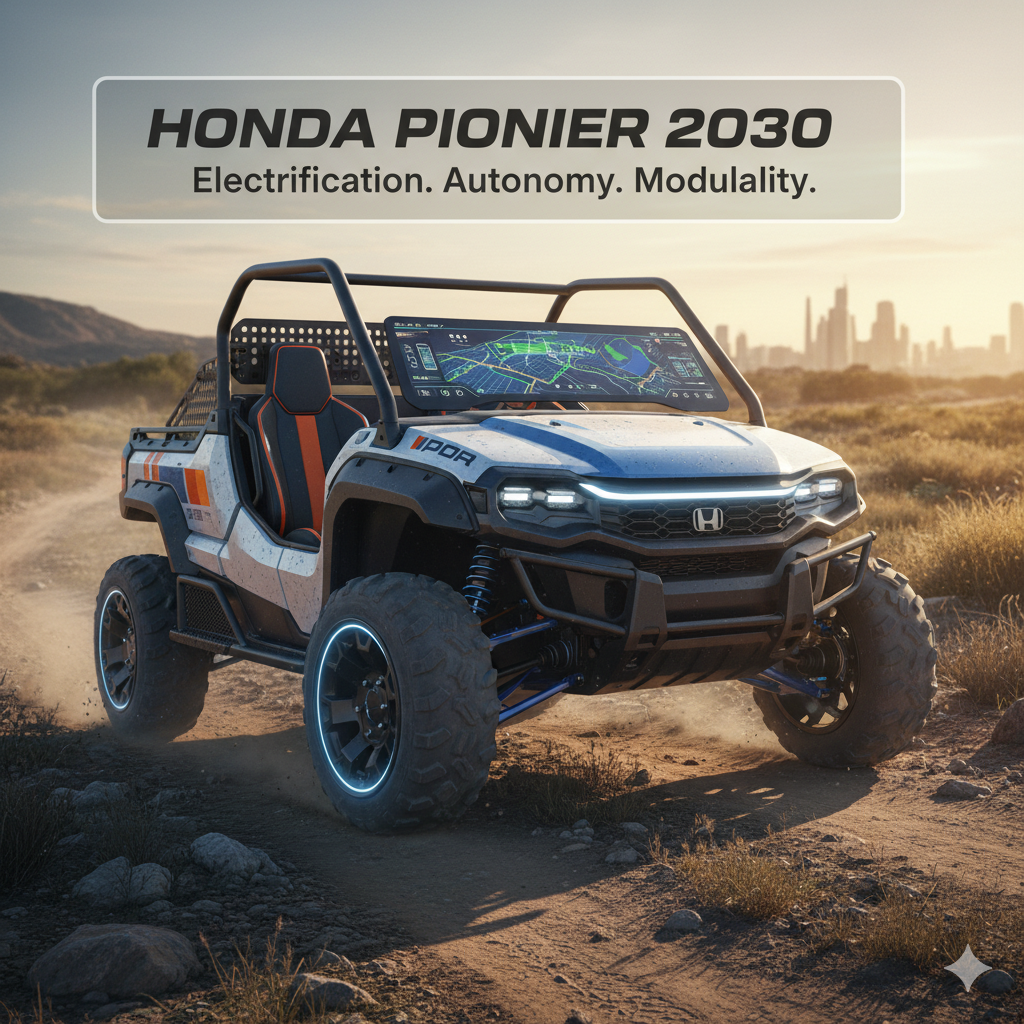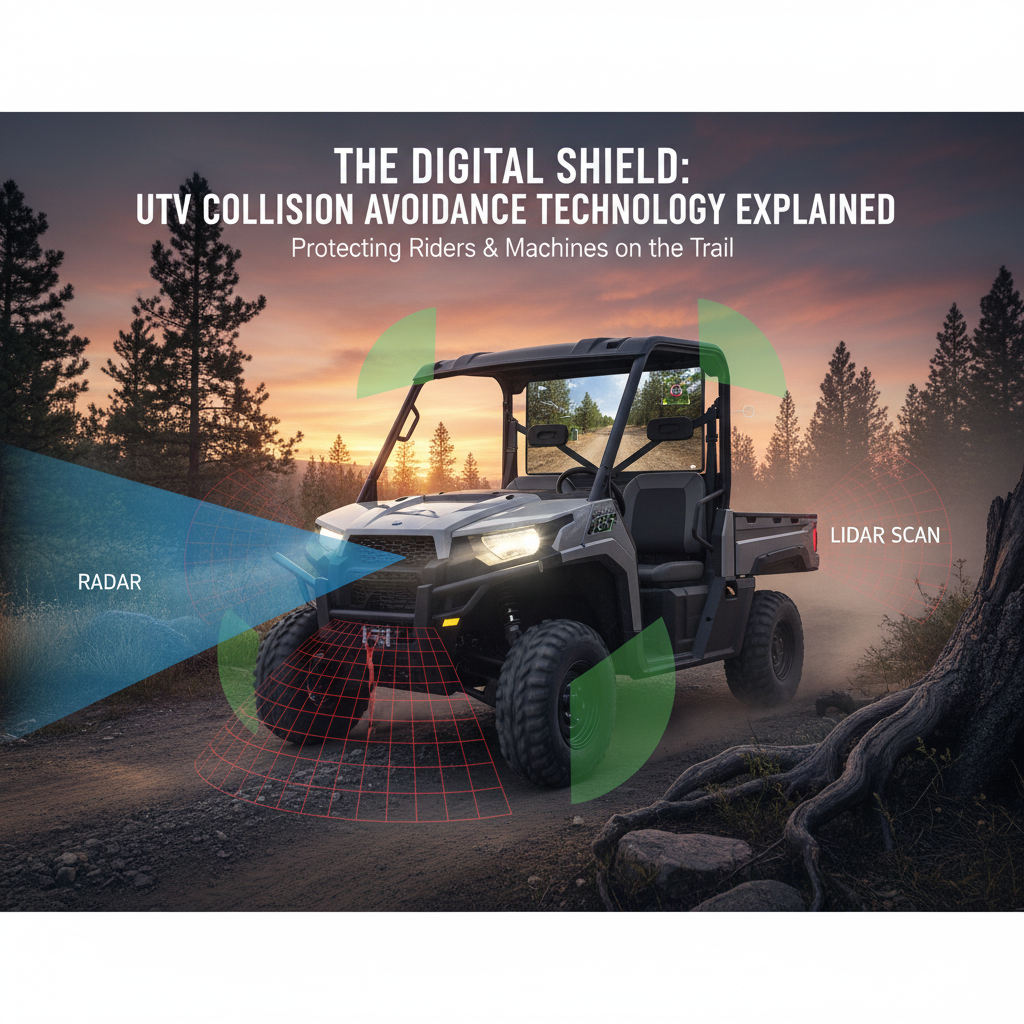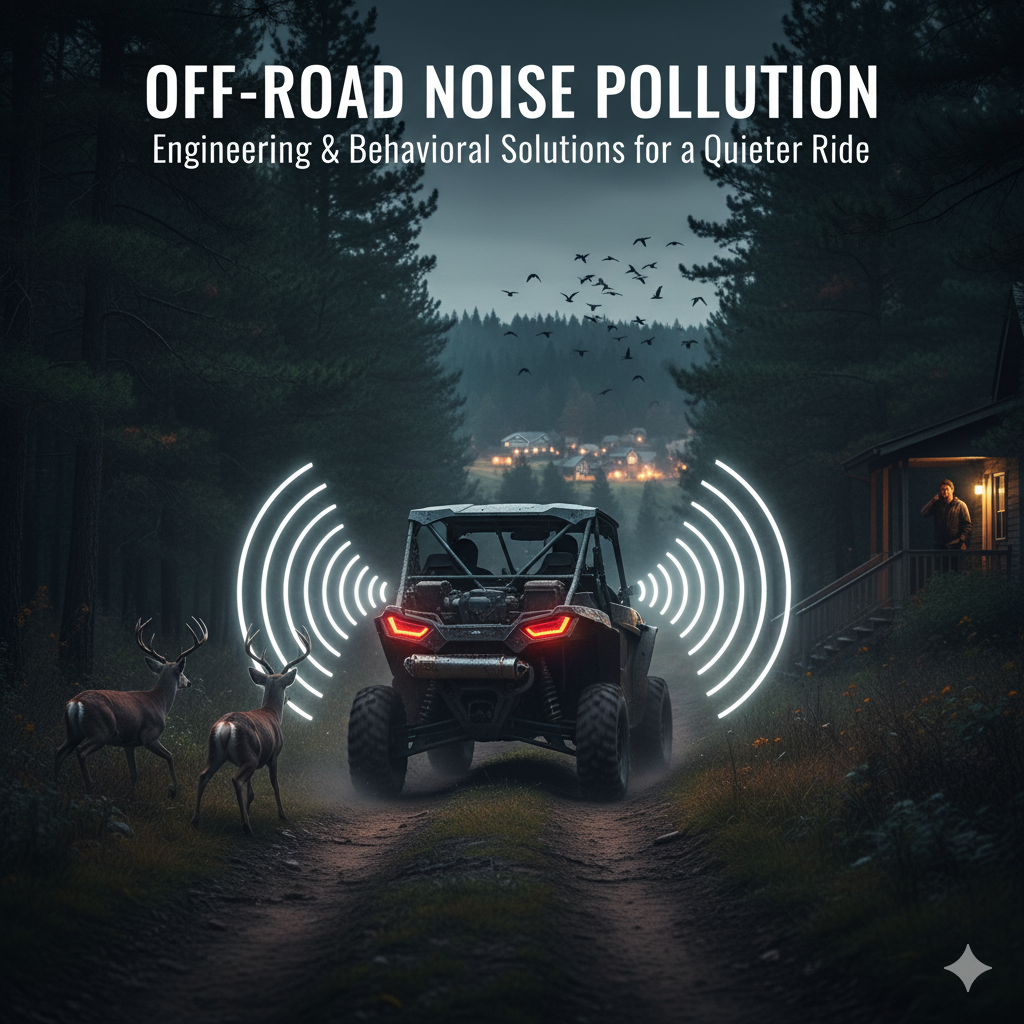Welcome back to the blog!
We’ve spent a lot of time looking backward at the incredible heritage that built the Honda Pioneer.
Now, let’s grab our crystal ball and look forward.
The UTV market is one of the fastest-evolving segments in powersports, and the pace of innovation is only accelerating.
By the year 2030, the Honda Pioneer—a machine already defined by its legendary reliability and work-ready design—will undergo a transformation driven by three major forces: Electrification, Autonomy, and Modularity.
This isn’t just about bigger engines; it’s about a complete rethinking of what a Utility Task Vehicle can be.
Here are my boldest predictions for how the Honda Pioneer will evolve by the end of the decade.
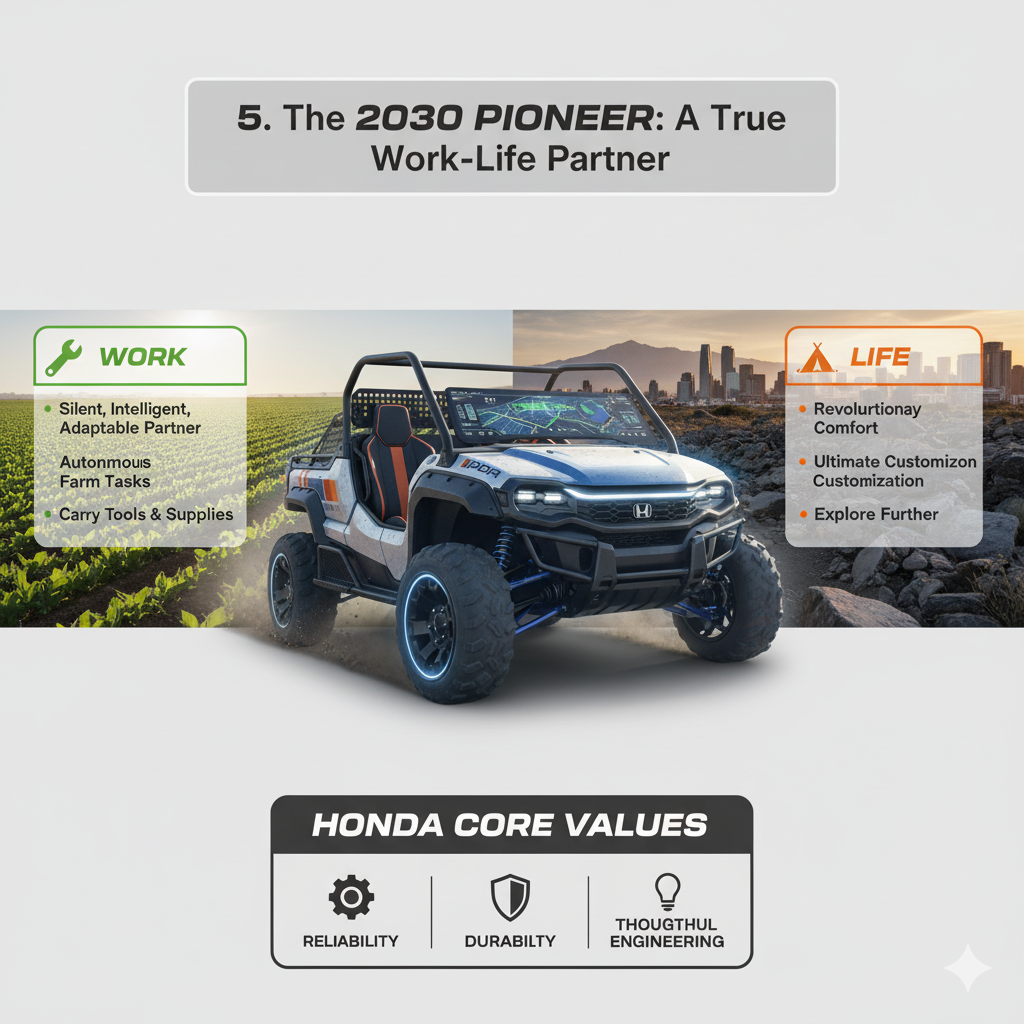
Prediction 1: The All-Electric Pioneer e: The End of the Belt
The single biggest change will be the transition to an all-electric powertrain.
Honda has already committed to a massive shift toward electrification, and the UTV market is a perfect fit.
- The Powertrain: The Pioneer 1000-e will feature a high-density, solid-state battery pack mounted low in the chassis for an incredibly low center of gravity. Instead of a single motor, we’ll see four independent hub-mounted electric motors, one for each wheel.
- The Advantage: This eliminates the entire drivetrain—no more transmission, no more driveshafts, no more differentials, and, crucially for UTV owners, no more CVT belts. The result is instant, massive torque at every wheel, superior ground clearance, and virtually silent operation.
- The Honda Twist: Honda’s commitment to reliability means the Pioneer e will feature redundant battery cooling and management systems to ensure performance in extreme heat and cold. Range anxiety will be solved by a modular, swappable battery system, allowing commercial users to quickly exchange depleted packs for fully charged ones.
Prediction 2: AI-Driven Active Suspension and Terrain Mapping
By 2030, suspension will move beyond passive damping.
The Pioneer will be equipped with a sophisticated, AI-driven active suspension system.
- The Tech: The system will use LIDAR and high-speed cameras to scan the terrain 50 feet ahead of the vehicle. An onboard AI will process this data and instantly adjust the compression and rebound of each individual shock absorber before the wheel hits the obstacle.
- The Result: The ride quality will be revolutionary. The Pioneer will “float” over washboards, and the suspension will stiffen instantly for jumps or high-speed cornering, eliminating body roll.
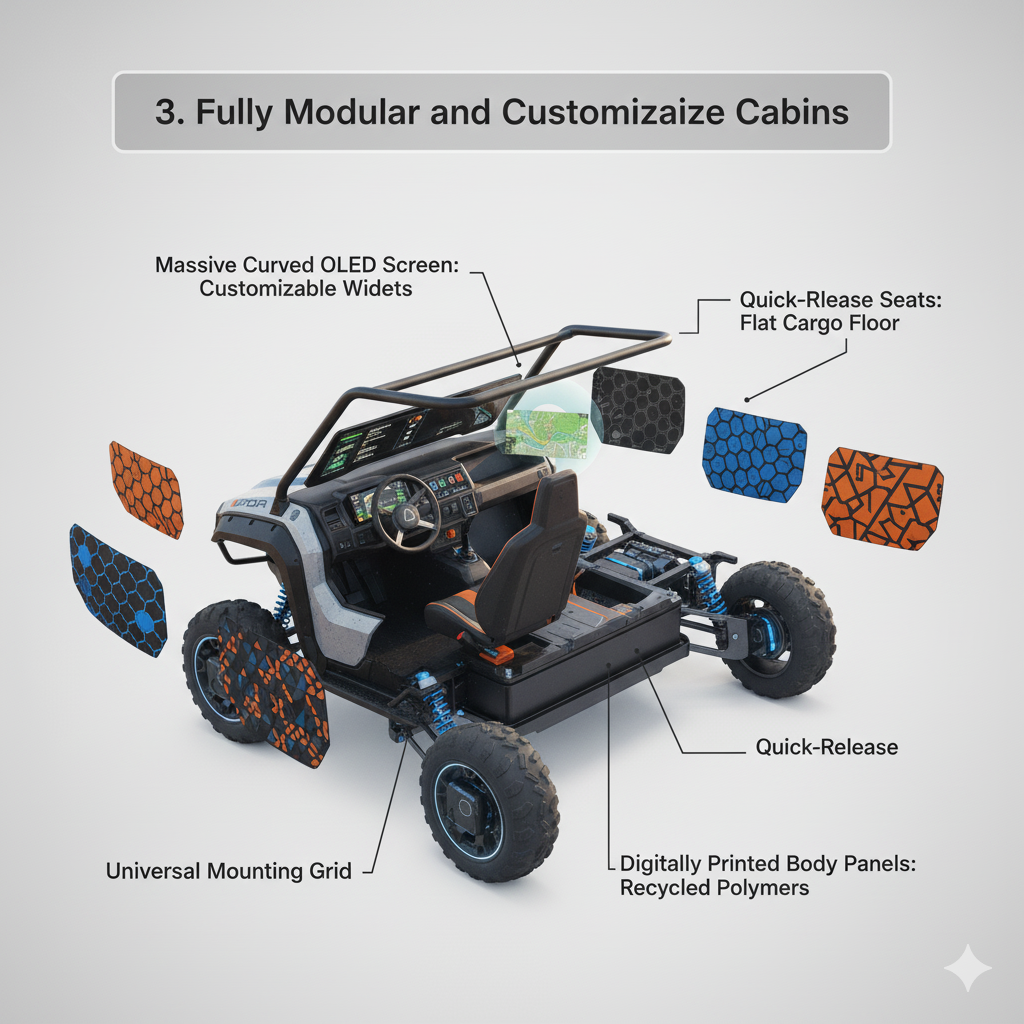
- Autonomous Trail Mode: The AI will also offer a “Trail Optimization” mode. The driver sets a desired speed, and the Pioneer autonomously manages the throttle, braking, and suspension to maintain that speed over any terrain, allowing the driver to focus purely on steering. This is the ultimate evolution of Honda’s existing i-4WD and DCT technology.
Prediction 3: Fully Modular and Customizable Cabins
The Pioneer is a utility machine, and utility demands flexibility.
The 2030 Pioneer will take modularity to a new extreme.
- The Cabin: The entire cabin structure will be designed around a universal mounting grid. Seats will be quick-release and interchangeable. Need a flat cargo floor for a large item? The rear seats fold flat and the front passenger seat can be removed in under 60 seconds.
- The Dash: The dashboard will be a single, massive, curved OLED screen that is fully customizable. Need to monitor engine temps and range? Drag the widgets to the front. Using the machine for agriculture? Display crop data and GPS lines.
- The Body Panels: Following the retro-futuristic trend, the body panels will be modular and digitally printed from recycled, impact-resistant polymers. Owners can download new panel designs or print replacement parts at home, making customization and repair simpler than ever.
Prediction 4: The “Work-First” Autonomous Mode
While fully autonomous driving on public roads is still a challenge, the Pioneer will embrace autonomy for specific, repetitive work tasks.
- Geo-Fencing and Path Following: Commercial Pioneers will be able to perform tasks within a pre-defined geo-fenced area. Imagine a Pioneer autonomously following a pre-programmed path to spray a field, or repeatedly driving a loop to check livestock, all while the operator manages the attached implement.
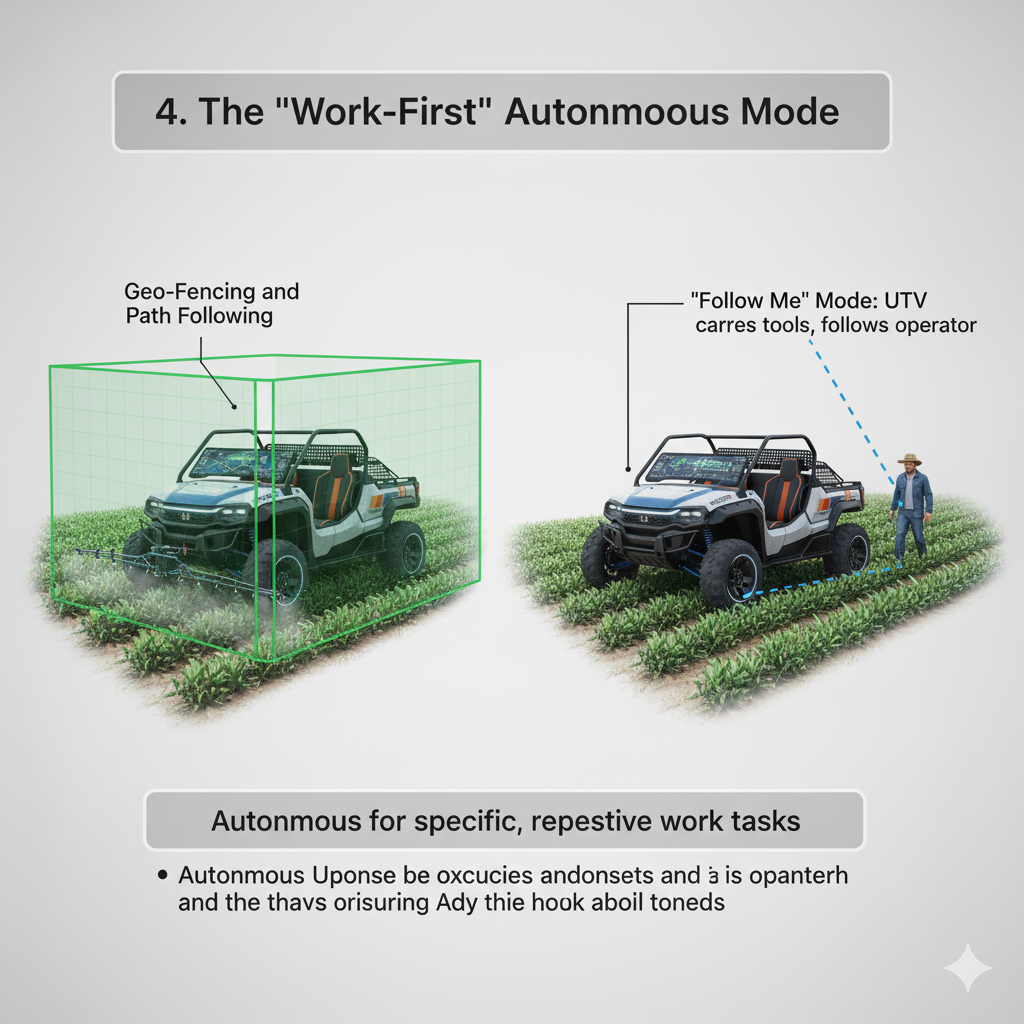
- “Follow Me” Mode: Using advanced sensor fusion, the Pioneer will be able to follow the operator on foot at a safe distance, carrying tools or supplies. This is the ultimate evolution of the utility concept.
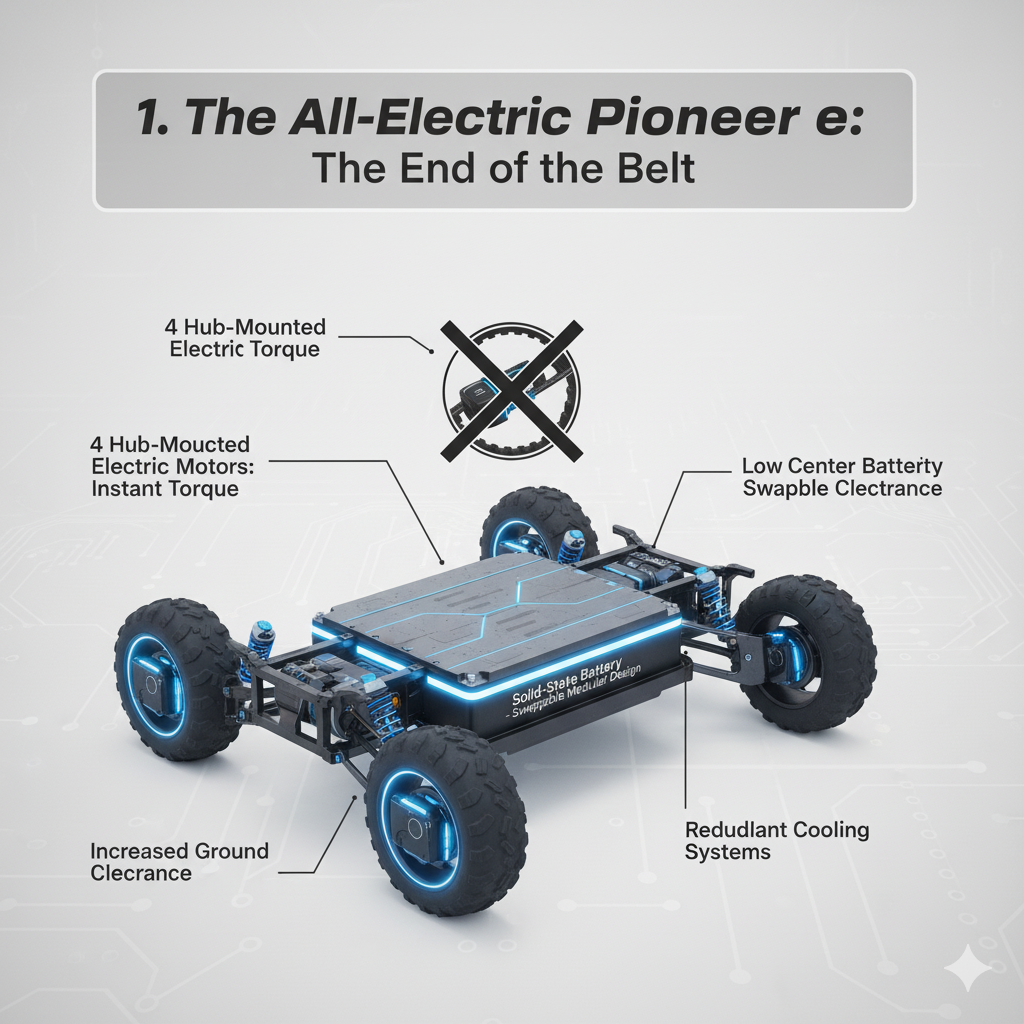
The 2030 Pioneer: A True Work-Life Partner
The future of the Honda Pioneer isn’t just about faster speeds or more horsepower.
It’s about a machine that is deeply integrated into the operator’s life, whether for work or play.
It will be a silent, intelligent, and infinitely adaptable partner.
The core Honda values—reliability, durability, and thoughtful engineering—will remain the bedrock.
But the technology layered on top will make the 2030 Pioneer feel like something out of a science fiction movie.

It’s a future I, for one, can’t wait to drive.
References & Further Reading
- Future of UTV Market: Electric and Autonomous Vehicles [1]
- Honda’s Global Electrification Strategy [2]
- Active Suspension Technology in Off-Road Vehicles [3]
- Modular Design in Automotive Manufacturing [4]

